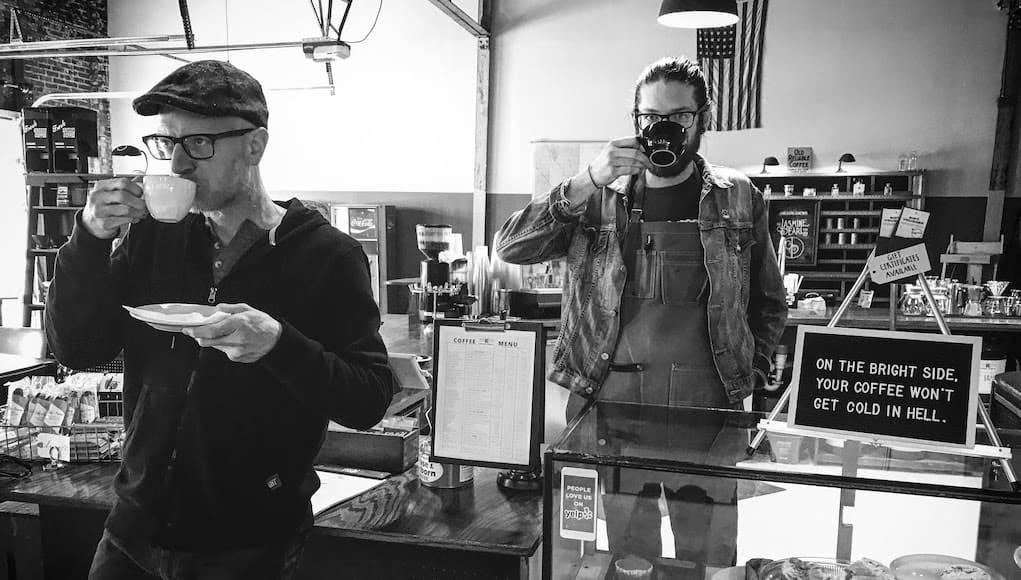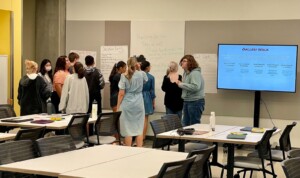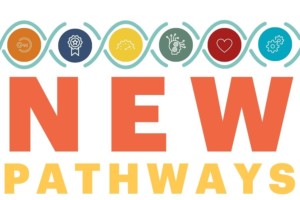I’m in a New Place—and It’s so Familiar!

Sitting on my usual stool at Kaffeine, my usual Indianapolis coffee shop, I’m thinking about the nature of work in general. I’m joining the Getting Smart team as Vice President of Growth after first meeting Tom and company some seven years ago, at SXSW EDU. That event, in the city of Austin, has been such a special place for the evolution of my career, from classroom teacher to consulting in instructional technology and now doing so for education professionals with Getting Smart.
Tom’s next book is entitled The Power of Place and is available now. The timing is too serendipitous for me. I have to apply the ideas in the book to my own journey as an education professional. Since leaving school district life five years ago, I’ve worked remotely for Alma, the student information system. As such, when I’m not at an education conference or visiting schools in the field, I’m usually here sipping a bottomless cup of coffee. My job may have changed, but my “place” has not. And how surreal this is isn’t lost on me. However, such professional culture won’t be surreal for the students we’re currently serving in our schools. They too will often choose a specific place where they feel productive doing their work, regardless of who compensates them. And any place is more inspiring than a commute through traffic to a business park with a cubicle farm.
The way a place creates meaning for an adult is a variation on the themes of Tom’s new book. My coffee shop is grounding while remaining interesting (pun partly intended). It provides a higher probability of serendipity for networking and new business at the risk of lost productivity for happenstance conversations that serve merely as distractions. Regardless, I’m one of those types that thrive on that energy, so much so that when I’m working at home or in a hotel, I’ll resort to the white noise of Coffitivity over silence.
At Kaffeine, the staff have become friends. They know what I’m going to order before I do and are surprised when I mix it up on occasion. They know where I sit and often will beat me to my stool at the counter with my coffee. We’ve gotten to know each other beyond the barista-patron edges. Are you humming the chorus of the “Cheers” theme yet? So for the first time in my working years, I have the same “desk” but serve on a different team.
Ultimately, I know what I need to keep moving forward with my work and my commitment to the coffee shop is about how that specific place makes me feel as I work. How do our students feel about their learning environs relative to what is available off the school grounds?
Virtual schools or eLearning initiatives don’t naturally correlate with this consideration of space. A few years ago, I ran a blended learning program for Center Grove Community Schools within a brick-and-mortar high school of 2,600 students just south of Indianapolis. At the time, the program was a voluntary option for up to half the school day for select high-performing students and also to allow an increase in scheduling flexibility for guidance. The program has since grown, but then, we were operating with around 200 students, just under 10% of the student body enrolled, with a half dozen teachers or so likewise splitting their time between direct instruction in their physical classrooms and asynchronous education delivered over our district-wide LMS.
During flexible learning time, approximately 90% of the students in the program were still required to report to the school library for those periods of the day—a place that wasn’t very designed with the sort of coffee shop energy that promotes the networking, and collaboration I described above.
Now, I think about how the program could have done more than increasing the flexibility of the master schedule. It could’ve expanded the footprint of the campus to give students more real-world learning opportunities, including remote working skill development. However, it was an admirable start and by large, an exemplary program ahead of its time relative to neighboring districts.
Prior, I’d taught for an inner-city public charter high school and was able to more regularly partner with local businesses within walkable distance to expand the options of places where learning could take place. I learned that if students revisited the same place over weeks, “field trip novelty” wore off, but “*sigh* this is school” didn’t set in. Classroom management was nil for my high school students. Productivity and creativity were spurred by the energy of places that didn’t have that “this is school” stigma.
So, if the new remote working paradigm sticks (and it will), I wonder how are we preparing kids for such work when we’re still propping up things like attendance, bell schedules, and expectations for seat time, mostly as a convenience to the adults? Can we meet our students out there? Somewhere? Tom, Emily, and Nate talk about this in the book if you’d like to share it with your colleagues as you consider the power of place for your learning community.
I hope to continue exploring ways educators are doing this very thing. I’ll save you a seat and coffee’s on me if you care to join the convo!
For more, see:
- The Power of Place
- Podcast: David Bluestein on Working in America
- Place-Based Education Anchors Learning in Community
Stay in-the-know with innovations in learning by signing up for the weekly Smart Update.






0 Comments
Leave a Comment
Your email address will not be published. All fields are required.